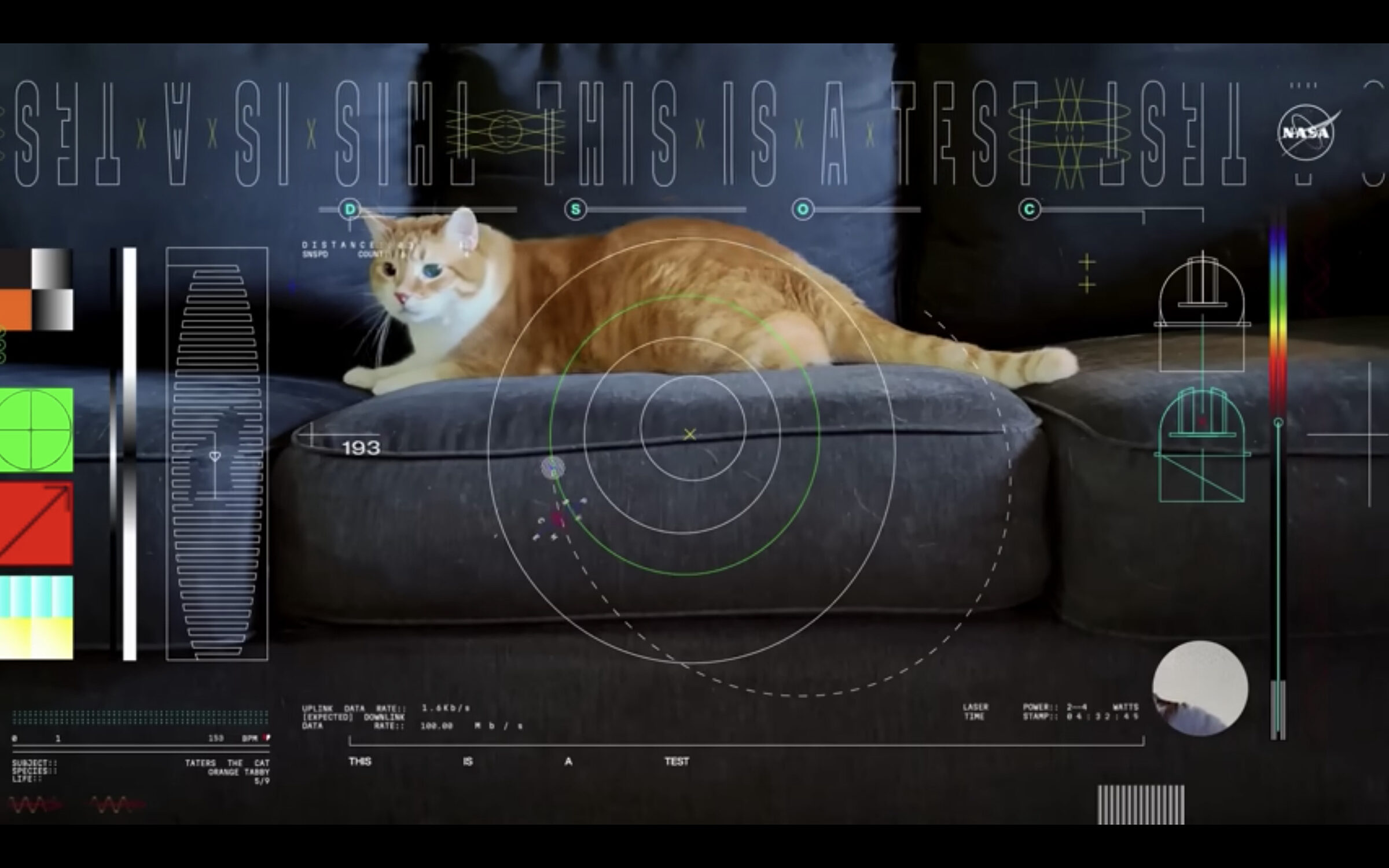The Downlink • Dec 22, 2023
Laser pointer + cat = science
Space Snapshot

The Uranian system has never looked better. This new image from JWST shows the ice giant and its rings glowing in the near-infrared, with distant galaxies in the background. The image, captured by the space telescope’s NIRCam instrument, can also be seen as a close-up that shows the seasonal north polar cloud cap, the faint inner and outer rings (including the thinly spread and subtle Zeta ring closest to the planet), a view of the planet’s 27 known moons, and several vibrant storms near and below the southern border of the polar cap. Image credit: NASA/ESA/CSA/STScI.
Fact Worth Sharing

Unlike other planets, auroras on Uranus are not in line with the poles. This is because Uranus' magnetic field is tilted by nearly 60 degrees. The reason is unknown, but one theory is that it was caused by whatever event made Uranus spin on its side compared to its orbital axis.
Mission Briefings


Mars may have been volcanically active more recently than we thought. Research from the University of Arizona suggests that the Elysium Planitia region may have had intense volcanic and seismic activity in the relatively recent past. Researchers made these findings by using a combination of spacecraft images and measurements from ground-penetrating radar to reconstruct subsurface lava flows in three-dimensional detail. Pictured: The fractures of the Cerberus Fossae landscape in Elysium Planitia on Mars indicate the area’s relative youth. Image credit: ESA/DLR/FU Berlin.

The Peregrine lunar lander is ready for a January launch. The privately developed lunar lander is ready for a launch in early January for a late February landing on the Moon. Peregrine is carrying 20 commercial and government payloads, including five provided by NASA as part of its Commercial Lunar Payload Services (CLPS) program. Other payloads include a small lunar rover developed by Carnegie Mellon University and a set of even smaller rovers from the Mexican Space Agency.

The Artemis II crew met with President Biden this week. The four astronauts — three Americans and one Canadian — are assigned to fly around the Moon no earlier than late 2024 on the first crewed mission beyond low-Earth orbit since the Apollo program. Biden and Vice President Kamala Harris met with the astronauts at the White House, showing off the Oval Office’s collection of Apollo Moon rocks.
From The Planetary Society


Dragonfly is soaring into its design phase. NASA's mission to send a flying spacecraft to Saturn's moon Titan has been authorized to proceed with work on final mission design and fabrication. This week on Planetary Radio, we get an update on the mission's progress and what to expect in the coming years. Pictured: An artist’s concept of Dragonfly in flight. Image credit: NASA/Johns Hopkins APL/Steve Gribben.

Water is a big part of what makes Earth special. Without it, life on this planet wouldn’t be possible. But where did this water come from? The answer to this question can help us understand the origins of life on Earth, and teach us what to expect about water on other worlds, including exoplanets.

China’s plans for outer Solar System exploration are growing. A Callisto impactor, a Uranus flyby, and a dedicated ice giant orbiter could be on the country’s planetary exploration horizon. Learn more about the missions China is exploring, and what we might discover thanks to these ambitious plans.

Invest in the future of space. Make a gift now to keep great missions going strong in 2024 and your donation will be matched up to $100,000! Your year-end contribution — especially when doubled — will go far to help launch us into all the exciting opportunities tomorrow will bring. Thank you!
What's Up

Jupiter shines very brightly in the eastern sky, appearing at sunset and getting higher in the sky throughout the night. Saturn looks yellowish, shining a little lower in the sky. Super bright Venus graces the eastern predawn sky. Learn what the end of 2023 has in store in our guide to December’s night skies.
The perfect gift for space nerds

Give a gift membership to The Planetary Society this year! This is a gift that goes a long way. Your gift recipient will receive an official member shirt and our quarterly magazine, The Planetary Report. Plus, they’ll know that their membership supports our mission to advance space science and exploration.
And you don’t have to worry about whether anything will arrive on time. When you buy a gift membership, a digital gift certificate will be available immediately for printing. Then, once your gift recipient has activated their membership via the digital gift certificate (in your confirmation email), their membership card and their welcome package will be mailed via post.
Wow of the Week

To test a state-of-the-art laser communication system, NASA did what anyone would do — it sent a high-definition cat video 31 million kilometers (19 million miles) through space. The Psyche spacecraft, which is on its way to the asteroid of the same name, used its laser transceiver to send back to Earth a 15-second video of an orange tabby named Taters chasing a laser (fittingly). The test, while undeniably whimsical, was also a successful demonstration of higher-data-rate communications that will be needed to support complex missions such as sending humans to Mars. Pictured: A still from the video. Image credit: NASA/JPL-Caltech.
Send us your artwork!
We love to feature space artwork in the Downlink. If you create any kind of space-related art, we invite you to send it to us by replying to any Downlink email or writing to [email protected]. Please let us know in your email if you’re a Planetary Society member!


 Explore Worlds
Explore Worlds Find Life
Find Life Defend Earth
Defend Earth

